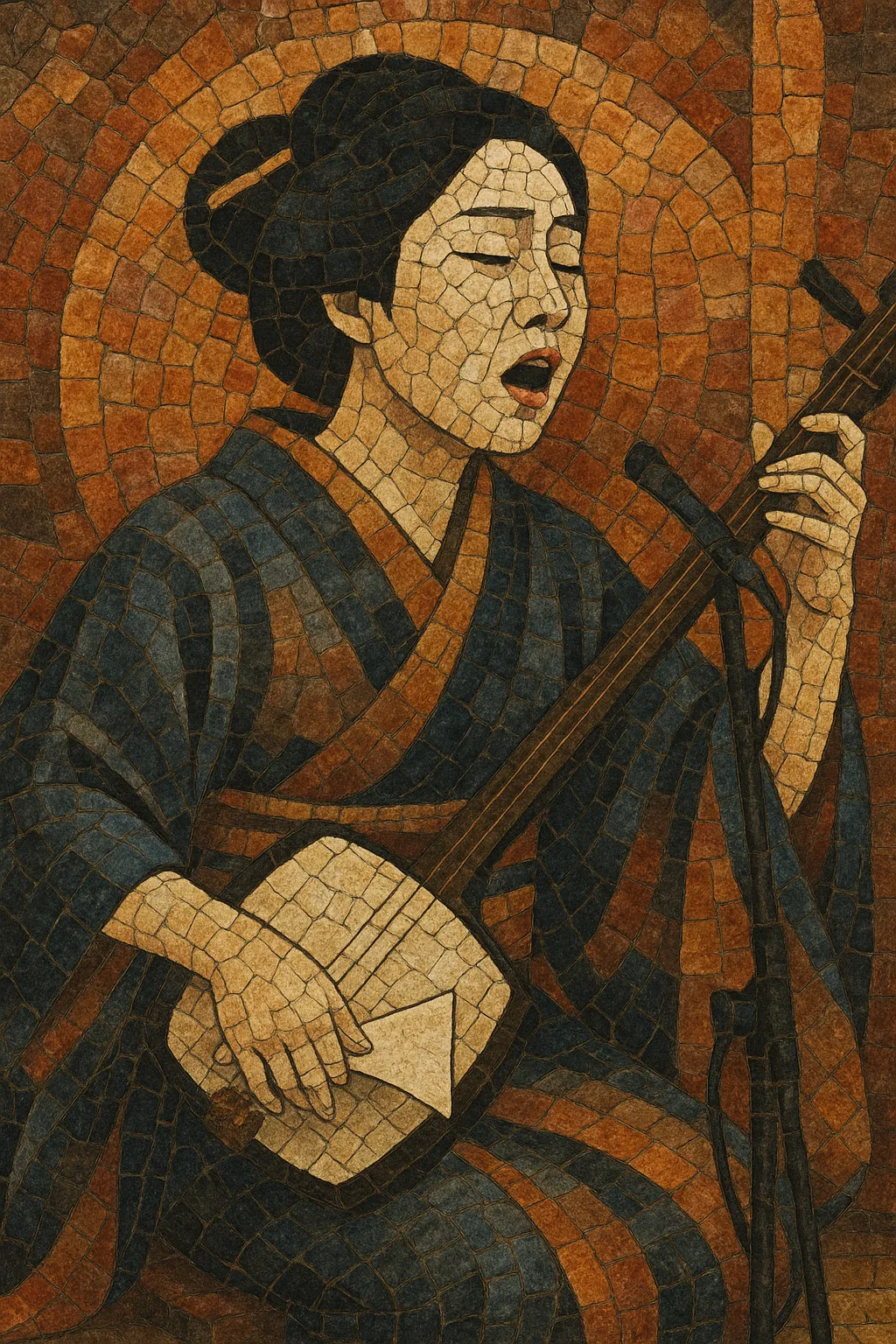Rōkyoku (also known as naniwa-bushi) is a Japanese narrative singing tradition in which a solo chanter delivers dramatic tales accompanied by shamisen. The performance alternates between heightened melodic passages and spoken narration, using rich timbral nuance, wide vibrato, and melismatic turns (kobushi) to convey emotion.
Originating in the late Meiji era, rōkyoku focuses on morally charged stories—chivalric yakuza epics, tragic romances, and historical dramas—crafted to move audiences through pathos, suspense, and catharsis. Its blend of folk-derived melody, theatrical declamation, and shamisen accompaniment made it a cornerstone of early modern Japanese popular entertainment and a vital ancestor to later song styles such as ryūkōka and enka.
Rōkyoku emerged in the 1890s as an urban popular form that fused narrative chant with shamisen accompaniment. It drew on older Japanese narrative and theatrical musics—especially jōruri (puppet-theatre narrative), kabuki-associated shamisen repertories such as nagauta, and folk song (min'yō)—while adopting a more direct, emotionally demonstrative delivery suited to public entertainment halls (yose).
During the 1910s–1930s, rōkyoku flourished in theatres and traveling circuits. Charismatic chanters became national celebrities, and commercial recordings on shellac discs helped codify style: alternating sung sections (fushi) with spoken/declamatory passages (kotoba/serifu), dramatic rubato, and expressive melisma (kobushi). Thematically, stories often portrayed chivalric righteousness (ninkyō), loyalty, and tragic sacrifice—narrative traits that would echo in later popular song.
Radio broadcasts and records expanded rōkyoku’s reach, standardizing vocal techniques (including strong, chest-driven projection and wide vibrato) and shamisen accompaniments. House styles (iemoto-like lineages) and stage conventions—gestures, pacing, and audience interjections—stabilized. The genre also intersected with emerging commercial song (ryūkōka), seeding melodic idioms and delivery practices that later shaped enka.
After World War II, cinema, television, and newer popular genres gradually displaced rōkyoku in mainstream venues. Yet its DNA persisted: the emotional rhetoric, kobushi turns, and declamatory phrasing informed ryūkōka and especially postwar enka. Today rōkyoku survives through dedicated practitioners, preservation societies, and occasional revivals, recognized as a foundational link between traditional narrative arts and modern Japanese popular song.


